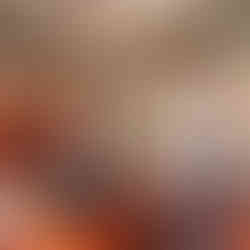Buxton Mansion (or 'Buxton Manor') of North Adelaide
- Jon Ruwolt
- Aug 5, 2019
- 3 min read
North Adelaide's 10 bedroom 'Buxton Manor' (with six reception rooms!) was never built for a Lord of the North Adelaide 'Manor', although it certainly was a very large house, built for very prominent lawyer and golfer F.J. Fisher, who only had three children, and sold the house after World War 1, to move his family from North Adelaide to (cooler) Mount Lofty.
F.J. Fisher had this house built in 1908-1909. It was a departure from the two-storey bluestone houses that were a common feature in the area, reflecting the change in architectural fashion, from Victorian bluestone to the new red-brick Federation style.
Celebrated war artist Stella Bowen wrote of Fisher's daughter Hilda and her family of Buxton Manor, noting that,
"Hilda had been to Europe three times, played excellent tennis and really important golf, and was blessed with the quickest tongue and the most effervescent vitality I had ever met. But the chief thing about Hilda was her remarkable mother. Mrs Fisher was every bit as slender, elegant, and spirited as her daughters.”
Bowen was particularly impressed by the Fisher’s ability to organise social events:
"It was from this family that I first learnt to respect the hard-headedness that goes into the making of anything first-rate – even if its only a party! The Fishers entertained enormously and their parties were the best in town.” The newspapers of the time often described the Fisher’s parties.
However, this 'gentleman's residence' is most notable for its association with the Hon. Sir Josiah Henry Symon, who lived at Buxton manor from 1922-1935.
Sir Josiah Henry Symon was an Australian lawyer and politician, being a Senator for South Australia from 1901 to 1913 and Attorney-General of Australia from 1904 to 1905. Henry Symon's career eventually led him to represent the seat of Sturt in parliament. Symon was awarded a knighthood the day after the Australian constitution was formed.
Around 1945 the house was divided into four flats, bought by Dr. Earnest Flaum. One of the flats then gained a reputation because of its association with then tenant, Musica Viva committee member Edith Dubsky. This meant that the flat was used as a rehearsal space for some of the world's finest ensembles.
Buxton Manor, was designed by well known Adelaide architect Fredrick Dancker for Adelaide solicitor F.J. Fisher.
Other Dancker landmarks included “Adare” at Victor harbour, “Attunga” at Toorak Gardens, Botanical Gardens Headquarters and the Queen Victoria Hospital to name just a few.
With its extensive use of decorative brickwork, exotic timbers, and French Marseille tiled roof, Buxton Manor is a distinctive example of a "Country" house in the manner of William Morris' famous Red House in South-East London.
Currently disposed of as four massive apartments, plus a two bedroom cottage of 76 sq. metres, the property could continue as it is happily, or be easily re-converted back to the grand single residence it was prior to the second world war. There is an endless variety of uses that can be made of this amazing, versatile property.
It has been listed with a price of $3.75 million – $2.6725 million above North Adelaide’s median house price, according to CoreLogic. Selling agent Richard Colley of Ennis Partners Real Estate said the manor was an “extraordinary example of a home of it’s era”.
Read more:
"Tip your hat to a manorly residence in North Adelaide" - Chloe Metcalfe, The Advertiser, 01 AUG 2019
Real Estate Listing: 67-75 Buxton St, North Adelaide, SA 5006
Adelaide Heritage: Buxton Manor - House and Fence
SA Heritage Place Details: 67-75 Buxton Street NORTH ADELAIDE
Architects of S.A. Architect Fredrick William Dancker










































Comments